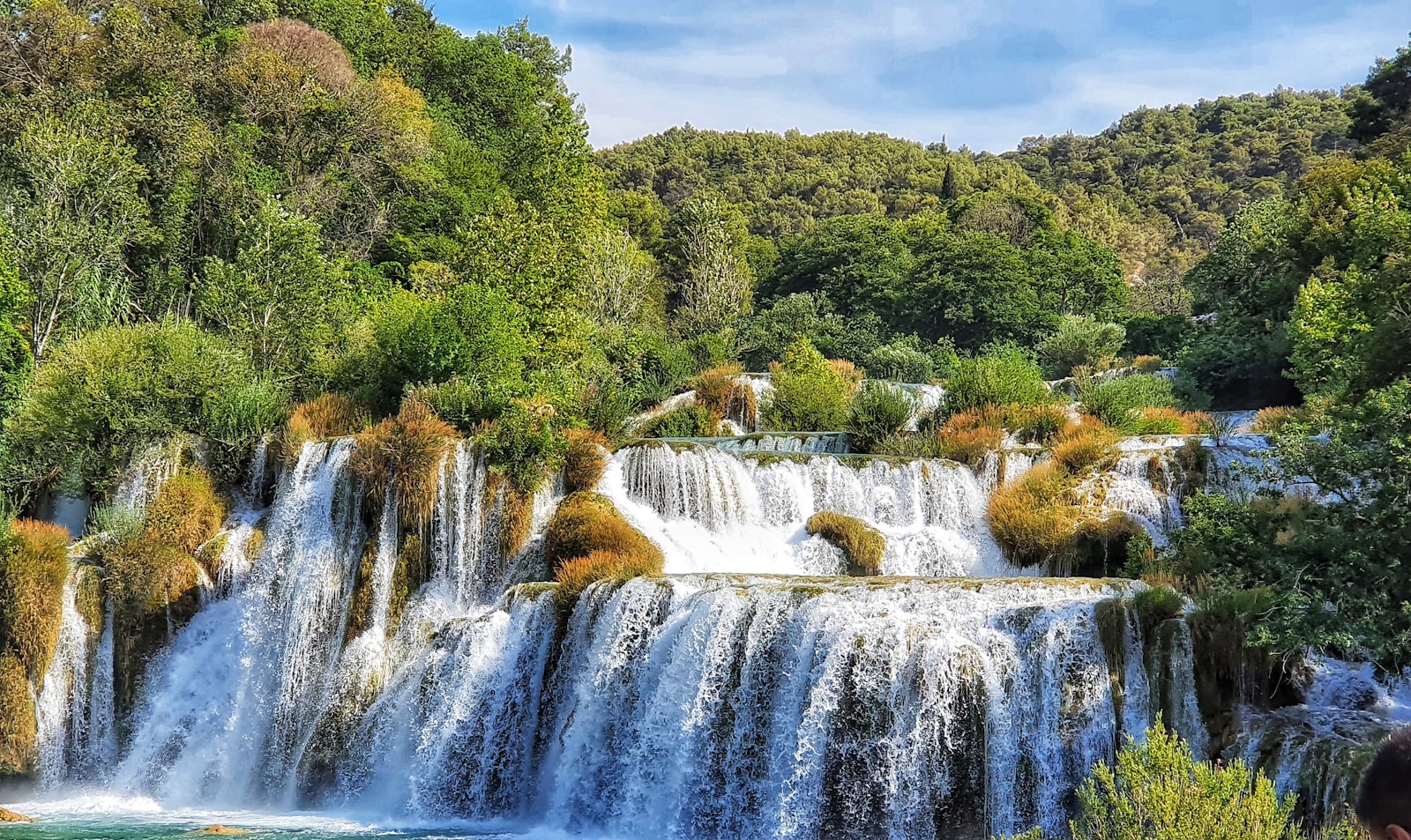Water cascading over rocky cliffs, the thunderous roar of rushing falls, and the mesmerizing beauty of nature’s watery wonders – national parks across America offer some of the most spectacular waterfall displays on Earth. From towering plunges to delicate veils, these natural phenomena not only shape landscapes but also create breathtaking focal points that draw millions of visitors each year. The combination of powerful water forces and picturesque settings makes waterfall-watching one of the most rewarding experiences in our national park system. Whether you’re a dedicated hiker, photography enthusiast, or nature lover, this guide will help you discover the most magnificent waterfall destinations within America’s protected wilderness areas.
Yosemite National Park: California’s Waterfall Paradise
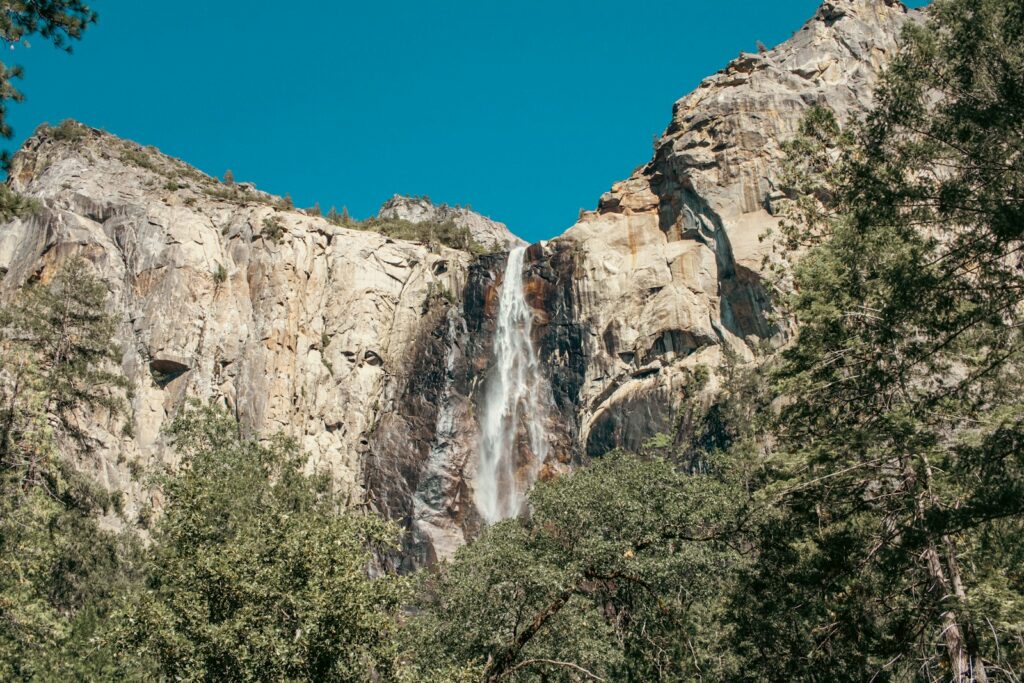
No discussion of national park waterfalls would be complete without highlighting Yosemite, home to some of North America’s most iconic cascades. Yosemite Falls, a magnificent 2,425-foot triple cascade, reigns as one of the tallest waterfalls in the world and provides a spectacular display, especially during spring snowmelt when its thunderous roar can be heard throughout the valley. Bridalveil Fall, another valley landmark, creates a misty veil that Native Americans called “Spirit of the Puffing Wind” due to how its spray appears to blow sideways during breezy conditions. The lesser-known but equally impressive Vernal and Nevada Falls can be experienced via the popular Mist Trail, where hikers receive a refreshing spray as they ascend stone staircases alongside these powerful cascades. For photographers and sightseers, Horsetail Fall creates the famous “firefall” phenomenon in February when sunset light transforms the water into what appears to be flowing lava against El Capitan’s granite face.
Olympic National Park: Washington’s Temperate Rainforest Waterfalls
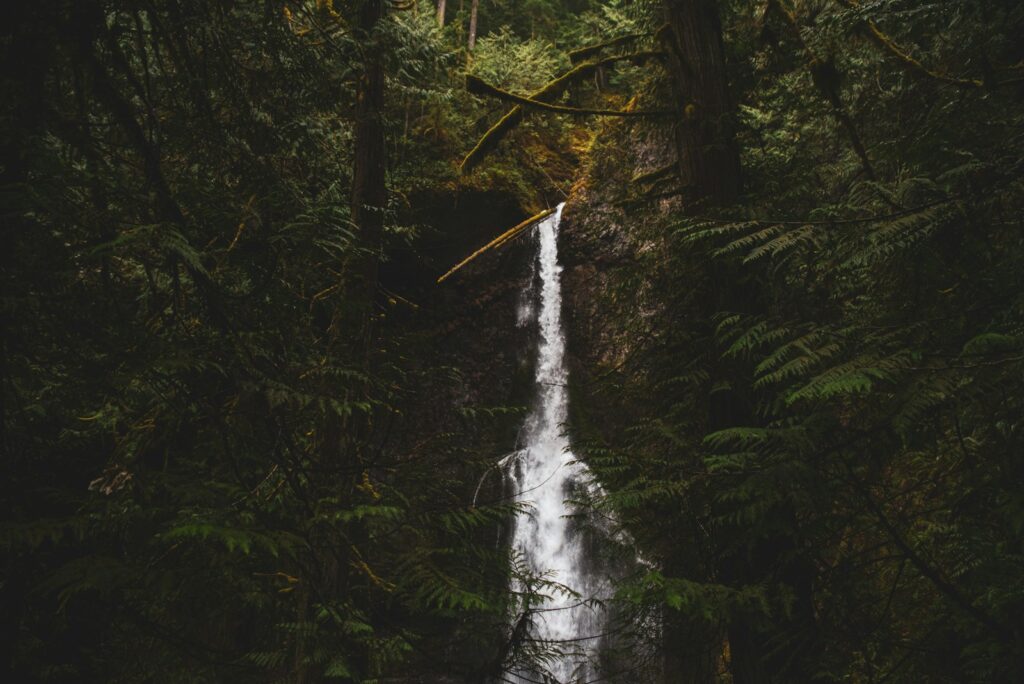
The diverse ecosystems of Olympic National Park in Washington state create perfect conditions for spectacular waterfalls amid verdant, moss-covered landscapes. Sol Duc Falls, a magnificent triple cascade flowing through a narrow gorge in the heart of an old-growth temperate rainforest, creates a mesmerizing visual as it splits into three or four distinct channels before reuniting downstream. Madison Falls offers a more accessible option with a paved, wheelchair-friendly path leading to its 60-foot cascade surrounded by lush ferns and towering conifers. For those willing to venture deeper into the park, Marymere Falls rewards hikers with a 90-foot plunge framed by ancient trees and emerald moss, creating an almost fairy-tale atmosphere. The park’s consistent rainfall (some areas receive over 12 feet annually) ensures these waterfalls flow year-round, though late autumn through spring typically offers the most dramatic displays when water volumes reach their peak.
Great Smoky Mountains National Park: Eastern Waterfall Wonderland
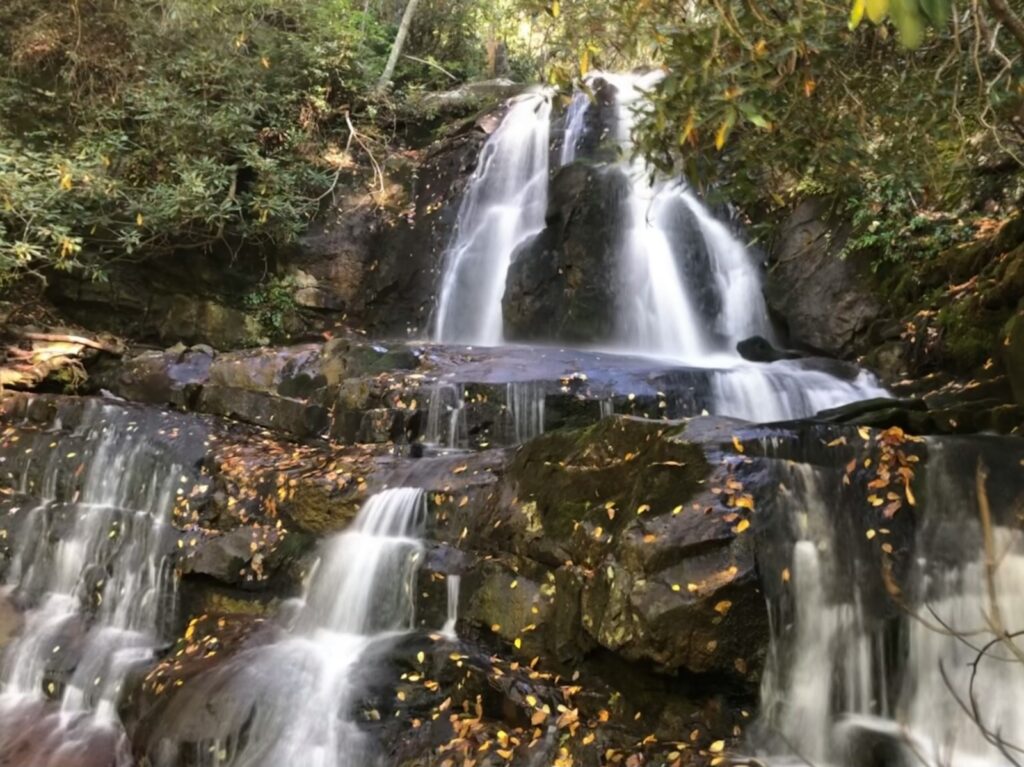
America’s most visited national park doesn’t disappoint when it comes to magnificent waterfalls, with over 100 cascades scattered throughout its ancient mountains. Abrams Falls, while only 20 feet high, compensates with extraordinary volume, creating one of the most powerful water displays in the eastern United States as it thunders into a deep pool surrounded by hemlock and rhododendron. The easily accessible Laurel Falls, reached via a paved 2.6-mile round-trip trail, features an elegant 80-foot cascade divided by a walkway bridge that allows visitors to experience the falls from an intimate middle perspective. Rainbow Falls, named for the rainbows that form in its mist on sunny afternoons, presents a 80-foot drop over a massive cliff face that becomes particularly spectacular after heavy rains. For those seeking solitude, the less-visited Ramsey Cascades rewards determined hikers with the park’s tallest waterfall, plunging 100 feet over multiple tiers through one of the park’s old-growth forests.
Yellowstone National Park: Geological Marvels and Mighty Falls
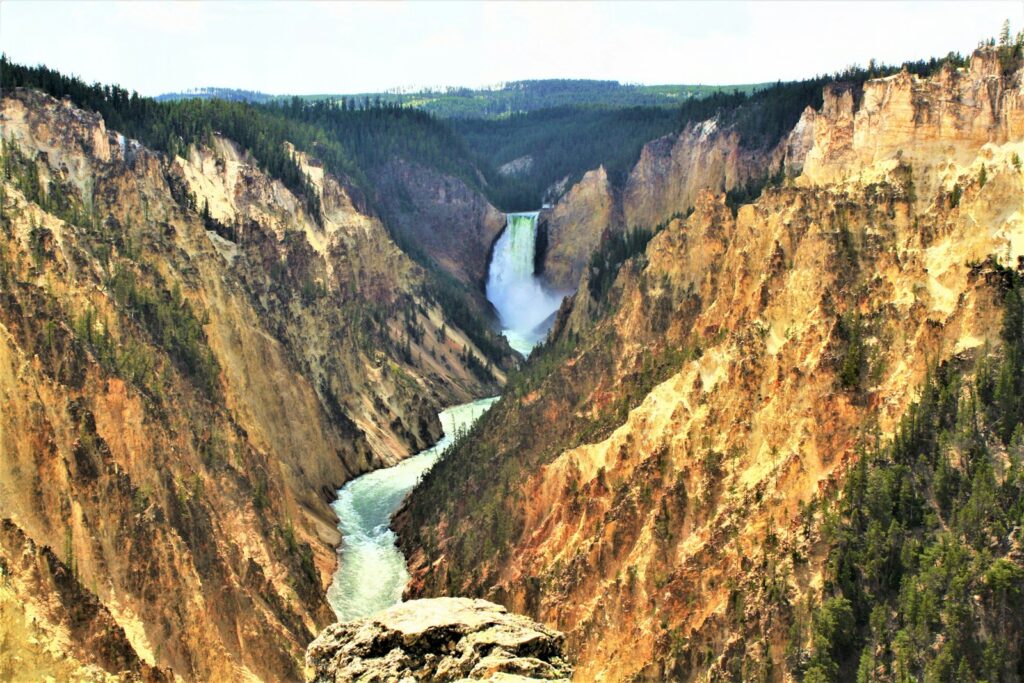
While Yellowstone may be best known for its geothermal features, its waterfall systems represent some of the most dramatic in the national park system. The Lower Falls of the Yellowstone River plunges 308 feet into the Grand Canyon of the Yellowstone, creating a thunderous display that can be viewed from multiple overlooks, with Artist Point offering perhaps the most photographed perspective in the entire park. The Upper Falls, though smaller at 109 feet, offers a powerful display of natural force as the river narrows and accelerates before its dramatic plunge. Fairy Falls, reached by a moderate 5-mile round-trip hike, rewards visitors with a delicate 200-foot ribbon of water cascading down a cliff face, offering a striking contrast to the park’s more thunderous cataracts. Mystic Falls provides yet another unique waterfall experience, where thermal features create steam that rises around the cascade, giving the falls their mystical name and appearance, especially during cooler mornings.
Glacier National Park: Montana’s Alpine Waterfall Treasures
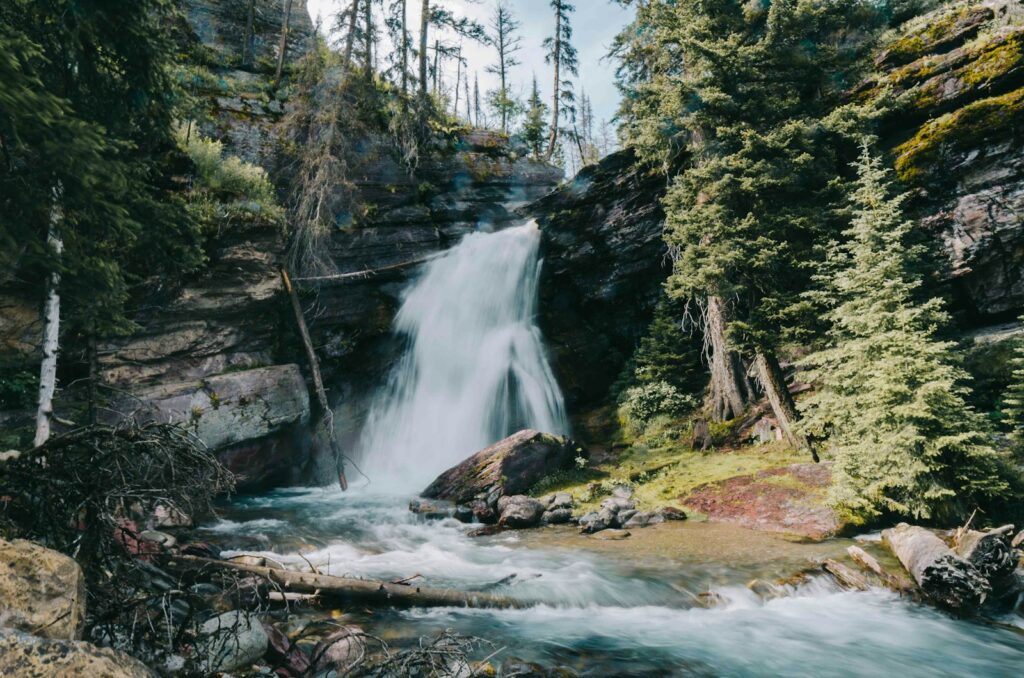
The dramatic terrain of Glacier National Park creates ideal conditions for spectacular waterfalls as snowmelt and rainfall navigate its rugged mountain topography. St. Mary Falls, accessible via a moderate hiking trail, features brilliant turquoise waters plunging through a rocky gorge, with the distinctive color resulting from glacial silt suspended in the water. Continuing just a half-mile beyond St. Mary brings visitors to Virginia Falls, where water cascades 50 feet into a misty pool surrounded by wildflower meadows during summer months. Running Eagle Falls (also known as Trick Falls) presents one of the park’s most unusual waterfall formations – during high water, it flows over a rock shelf, but as water levels drop, it emerges from a cave-like opening beneath the upper falls, creating the illusion of water flowing from solid rock. For those seeking spectacular roadside views, the Weeping Wall along Going-to-the-Sun Road creates a curtain of water seeping from the mountainside, drenching unwary motorists who venture too close during peak snowmelt season.
Grand Teton National Park: Wyoming’s Mountain Waterfall Gems

Though less famous for waterfalls than some other national parks, Grand Teton offers several spectacular cascades framed by some of America’s most dramatic mountain backdrops. Hidden Falls, reached via a moderate 2.5-mile hike from Jenny Lake, showcases a beautiful 100-foot cascade tumbling through pine forests with views of the cathedral-like Teton range in the background. Moose Falls, located just inside the park’s south entrance, provides an easily accessible 30-foot waterfall that plunges into a deep emerald pool, popular with photographers capturing long-exposure shots that contrast silky water against rugged rock. For adventurous hikers, Avalanche Canyon’s Lake Taminah waterfall offers a remote backcountry experience, with water cascading down huge granite boulders beneath the imposing shadows of Prospectors Mountain and Mount Wister. The seasonal Taggart Lake Falls, best viewed during late spring and early summer snowmelt, creates a perfect foreground for the iconic Teton range, offering one of the park’s most dramatic photographic opportunities when conditions align.
Shenandoah National Park: Virginia’s Blue Ridge Cascades
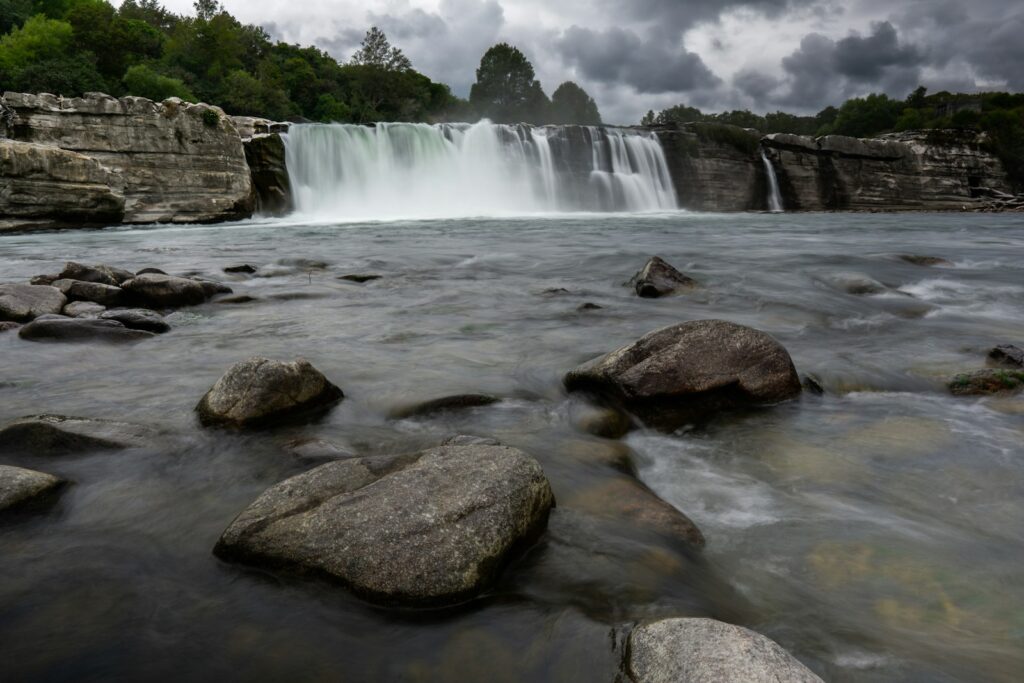
The ancient, weathered mountains of Shenandoah create numerous opportunities for beautiful waterfall viewing within easy reach of major Eastern metropolitan areas. Dark Hollow Falls, one of the park’s most popular attractions, features a 70-foot cascade that descends in several stages through a verdant hardwood forest, accessible via a relatively short but steep 1.4-mile round-trip trail. Overall Run Falls, the tallest waterfall in the park at 93 feet, combines an impressive cascade with panoramic views of the Shenandoah Valley, especially spectacular during autumn when surrounding forests explode with fall colors. South River Falls presents photographers with perfect opportunities to capture silky water effects as it drops 83 feet through a series of smaller cascades before its main plunge into a boulder-strewn pool. The more remote Doyles River Falls rewards hikers with two distinct cascades – an upper 28-foot and lower 63-foot fall – connected by a picturesque trail through a landscape that showcases the park’s rich biological diversity, from towering tulip poplars to delicate wildflowers.
Mount Rainier National Park: Washington’s Glacial Waterfall Spectacles
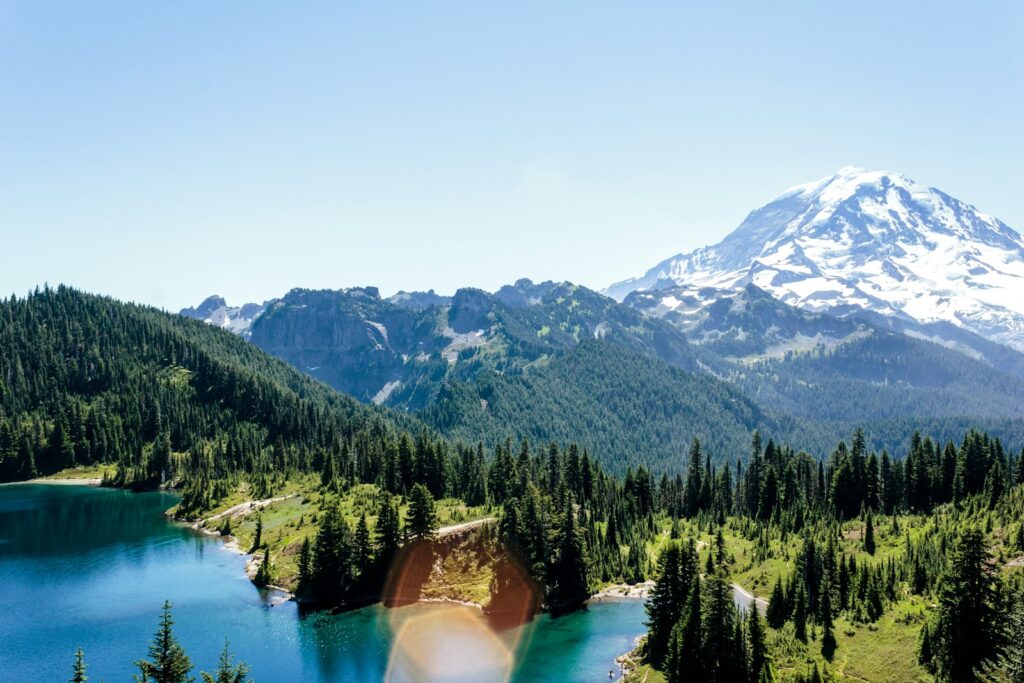
As home to the most glaciated peak in the contiguous United States, Mount Rainier National Park features numerous waterfalls born from ice melt and abundant rainfall. Narada Falls, easily viewed from a roadside overlook with a short pathway to the base, plunges 168 feet over a basalt cliff, creating a powerful display that generates mist visible from considerable distances during high water. The aptly named Spray Falls cascades 354 feet down a cliff face in the northern section of the park, creating a fine mist that nourishes unique plant communities adapted to the perpetually damp environment. Christine Falls, framed perfectly by an historic stone bridge along the road to Paradise, offers one of the park’s most iconic and easily photographed waterfall views despite its relatively modest 69-foot height. For those willing to hike deeper into the wilderness, Comet Falls rewards with a spectacular 380-foot plunge that resembles a comet’s tail when flowing at peak volume, making it one of the tallest and most impressive cascades in the Cascade mountain range.
Hawaii Volcanoes National Park: Tropical Island Falls
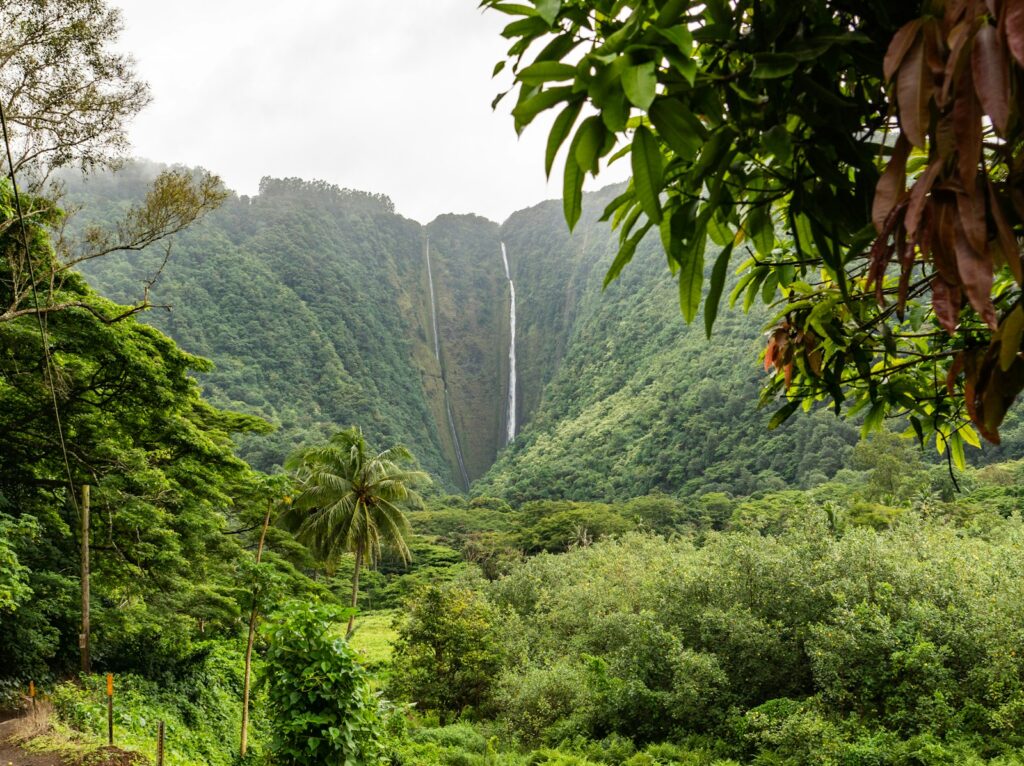
While primarily celebrated for its active volcanism, Hawaii Volcanoes National Park also features remarkable waterfalls created by abundant rainfall on the Big Island’s eastern slopes. Wai’ele’ele Falls, located within the park’s Kahuku Unit, descends gracefully through lush rainforest vegetation, offering a stark contrast to the park’s barren lava fields just a few miles away. The seasonal Koaie Stream cascades create a series of small but beautiful waterfalls that cut through ancient lava beds, demonstrating water’s persistent power to shape even the hardest volcanic rock over time. Outside the immediate park boundaries but part of the same watershed system, Akaka Falls plunges 442 feet into a gorge carved through some of the oldest exposed rock on the island, surrounded by tropical vegetation including wild orchids and bamboo groves. During heavy rainfall events, temporary waterfalls may form throughout the park as water seeks paths across the varied terrain, creating ephemeral spectacles that may last only hours before disappearing until the next deluge.
Zion National Park: Utah’s Desert Waterfall Oases
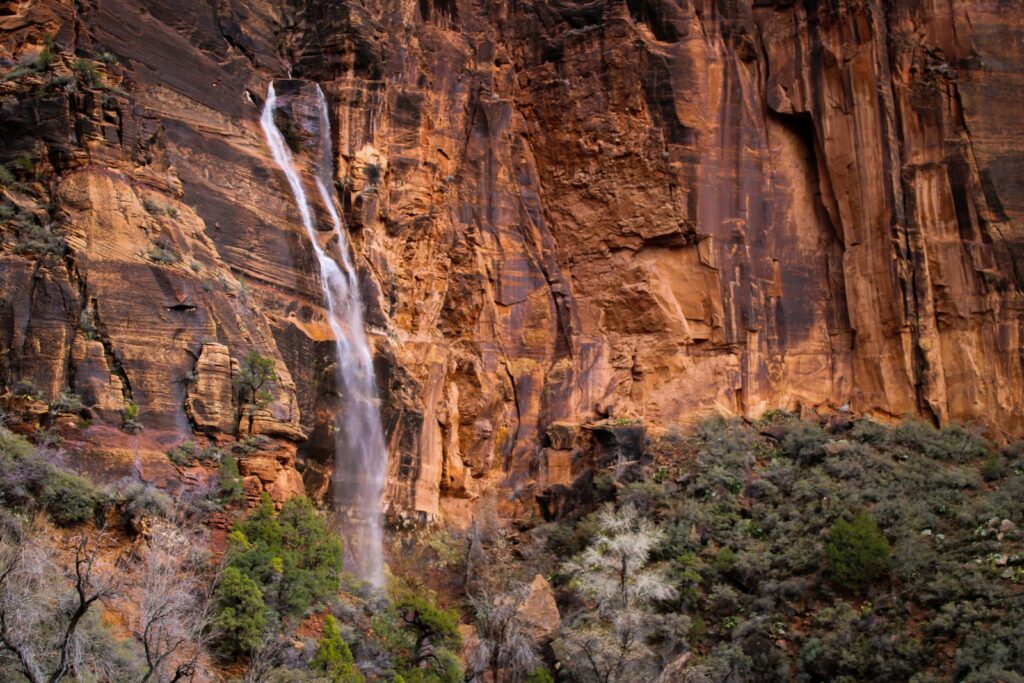
In the arid landscape of southwestern Utah, Zion National Park’s waterfalls provide dramatic contrast to the surrounding desert environment. The Emerald Pools Trails lead to a series of spring-fed pools and waterfalls, including the spectacular Upper Emerald Pool waterfall that drops from a sandstone cliff, creating a hanging garden ecosystem where ferns and mosses thrive in the desert. Weeping Rock presents a unique geological phenomenon where water that has spent hundreds of years traveling through porous sandstone emerges from the cliff face, creating what appears to be a “weeping” wall draped with hanging gardens of wildflowers and ferns. The Narrows, while not a traditional waterfall, features numerous small cascades as the Virgin River cuts through thousand-foot sandstone walls, creating one of the most unique water-based hikes in the national park system. After heavy rains or during spring snowmelt, ephemeral waterfalls appear throughout the park, including spectacular cascades that pour from the rim of massive sandstone cliffs, sometimes creating waterfalls over 1,000 feet high that may last only a few hours or days.
Sequoia and Kings Canyon National Parks: California’s Sierra Nevada Cascades

The dramatic elevation changes within Sequoia and Kings Canyon National Parks create perfect conditions for spectacular waterfalls among ancient giant sequoias and deep granite canyons. Tokopah Falls, accessible via a scenic 1.7-mile riverside trail, cascades 1,200 feet down a series of granite steps, most impressive during late spring when snowmelt transforms it into a thundering torrent surrounded by wildflower meadows. Mist Falls, located deeper in Kings Canyon, rewards hikers with a powerful cascade where the South Fork Kings River drops nearly 100 feet through a series of rapids and falls, creating a refreshing mist zone during hot summer months. Grizzly Falls, easily accessible from Kings Canyon Scenic Byway, offers a roadside spectacle as it plunges 80 feet over granite boulders, particularly impressive during peak snowmelt when the air fills with mist and thunder. The remote Roaring River Falls demonstrates the raw power of water as it squeezes through a narrow granite chute, creating a perpetual roar that gives the falls their appropriate name and providing a dramatic example of how water continues to shape the Sierra Nevada landscape.
North Cascades National Park: Washington’s Remote Waterfall Wilderness

Sometimes called the “American Alps,” North Cascades National Park harbors some of the most spectacular yet least-visited waterfalls in the national park system. Ladder Creek Falls, illuminated by colored lights during evening hours near the Skagit Gorge Powerhouse, creates a unique blend of natural beauty and historical significance as part of the park’s hydroelectric history. The remote Panther Creek Falls cascades through old-growth forest in multiple channels, creating a complex, braided waterfall that splits and reunites over moss-covered rocks before continuing toward the Skagit River. Colonial Creek Falls, while modest in height, features crystal-clear mountain water flowing through a series of pools and small drops, perfect for photographers seeking intimate waterfall compositions without large crowds. For serious backcountry enthusiasts, the remote Sulphide Creek Basin contains dozens of unnamed waterfalls flowing from high alpine glaciers, their locations so remote that some may rarely be seen by human eyes, preserving the true wilderness character that defines this rugged national park.
Planning Your Waterfall National Park Adventures
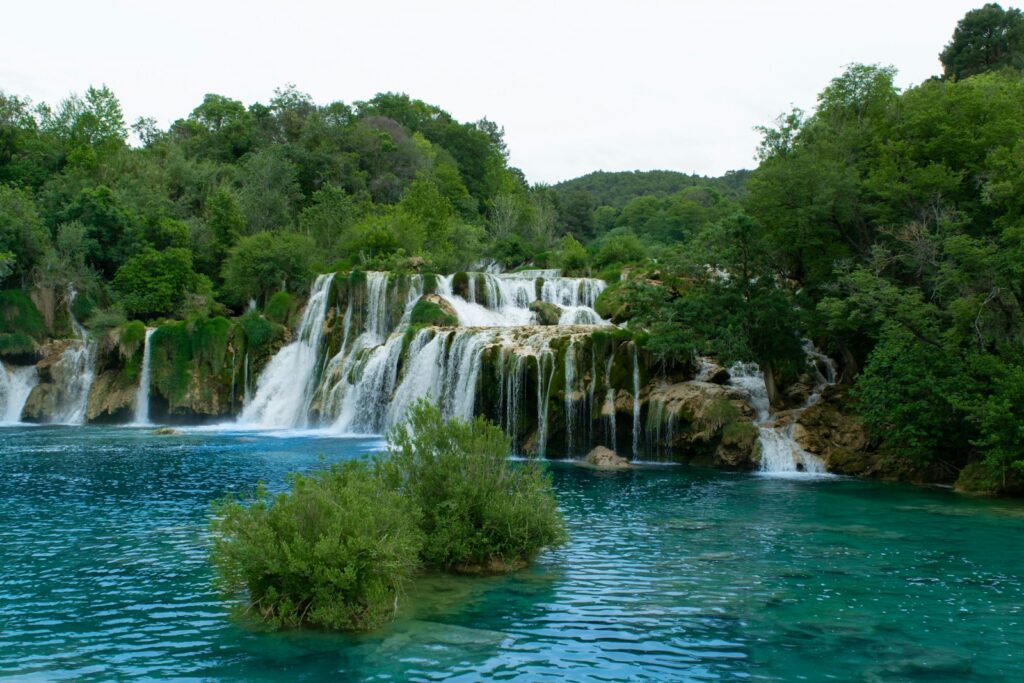
When planning your waterfall-focused national park visits, timing can be as important as destination selection. Spring snowmelt (April through June in most parks) typically offers the most spectacular water volume, transforming modest cascades into thundering cataracts, though popular trails may be muddy or partially flooded during peak runoff. Fall brings colorful foliage that frames waterfalls beautifully, particularly in eastern parks like Shenandoah and Great Smoky Mountains, while water levels remain manageable for safe hiking and photography. Always check park websites before visiting, as trails to popular waterfalls may close during extreme weather conditions or for maintenance, and remember that waterfall environments can be slippery and dangerous despite their beauty. Consider investing in appropriate footwear with good traction, waterproof camera gear if photography is your focus, and perhaps trekking poles for stability on wet, rocky trails. For the best photographic results, overcast days often provide ideal lighting conditions for waterfall photography, reducing harsh contrast and allowing for slower shutter speeds without specialized filters.
America’s national parks preserve some of the world’s most spectacular waterfall environments, from towering plunges in Yosemite to delicate cascades in Olympic’s rainforests. These dynamic water features not only create breathtaking scenic vistas but also support unique ecosystems where specialized plants and animals thrive in the perpetually moist microclimates. Whether you’re seeking easily accessible roadside wonders or remote backcountry cascades, the diversity of waterfall experiences within our national park system offers something for every nature enthusiast. As you plan your visits to these natural treasures, remember that each waterfall tells a geological story of water’s patient power to shape landscapes—a continuing process that has been unfolding for millions of years and continues with every drop that falls.

